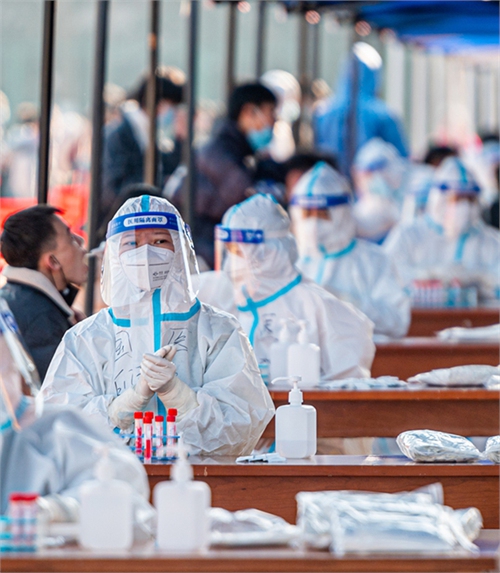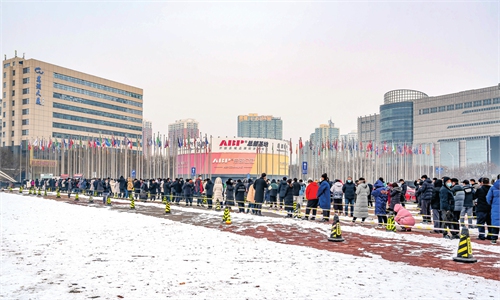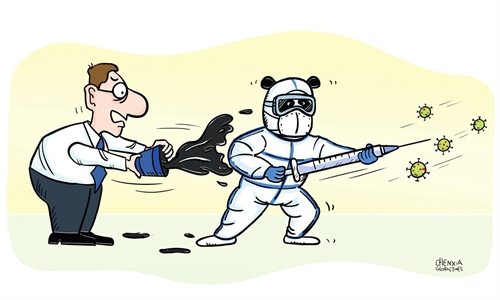Exclusive: China not to adjust dynamic zero-COVID policy for the time being: chief epidemiologist

Wu Zunyou, China's CDC chief epidemiologist Photo: cnsphoto
As long as China has no new measures to prevent the imported strains of the coronavirus from triggering large-scale transmission and with no effective way to contain the epidemic, the country will not adjust its dynamic zero-tolerance policy for now, because relying on only vaccines cannot contain COVID-19, Wu Zunyou, chief epidemiologist with the Chinese Center for Disease Control and Prevention, told the Global Times in an exclusive interview.
Responding to the question whether vaccinating 70 percent of the global population could end the acute phase of the pandemic, Wu said such an assertion is still open to discussion. Ahead of the fourth wave of the pandemic, many countries in Europe have already reached 70 percent total vaccination, and some countries like Germany, France and the UK have vaccination rates above 70 percent, but the occurrence of Omicron with breakthrough cases challenges the concept of herd immunity.
This means if you want to end the epidemic through building up the herd immunity but mutated strains can evade immunity, this concept will no longer apply, Wu noted.
"China has already reached a 70 percent vaccination rate, but as long as the virus can evade herd immunity, people can still get infected, like the recent outbreak in Tianjin, where many infected people were vaccinated, although the symptoms were milder," he said.
No matter how hard Western media outlets and observers slander China's zero-tolerance policy in fighting COVID-19, Chinese policymakers and epidemiologists consider that it is still the best way to reduce the catastrophic outcome of a reckless reopening.
"We previously thought COVID-19 could be basically contained through vaccines, but now it seems that there's no simple method to control it except with comprehensive measures, although vaccines are the most important weapon in curbing the epidemic, including Omicron," the chief epidemiologist said.
While the Beijing Winter Olympics organizing committee reports new COVID-19 cases among the athletes and relevant staff upon the arrival on a daily basis, effectively implementing the zero-tolerance approach and top-down mobilization help Chinese authorities limit those cases inside the closed loop, therefore there will be no infections outside the loop that are related to those within the closed loop, experts and officials said.
With the help of its zero-tolerance policy, China has experienced a much less severe epidemic compared to other countries. In sharp contrast to the death toll of more than 800,000 in the US, China has not seen a large number of deaths caused by the epidemic after the early outbreak in Wuhan in 2020. Reduced death toll proves this policy works, which has been also effective for the social and economic development, Wu noted.
In January, a study conducted by Christopher J L Murray from the Institute for Health Metrics and Evaluation in Seattle and published in The Lancet said that COVID-19 will continue but that the end of the pandemic is near, stating that the virus will become another recurrent disease that health systems and societies will have to manage.
By March 2022, a large proportion of the world will have been infected with the Omicron variant. With continued increases in COVID-19 vaccination, the use in many countries of a third vaccine dose, and high levels of infection-acquired immunity, for some time the global levels of SARS-CoV-2 immunity should be at an all-time high. For some weeks or months, the world should expect low levels of virus transmission, the study said.
Wu believes there are some practical challenges to Murray's hypothesis as there are a lot of differences between the novel coronavirus and influenza.
"First, immunity can last up to a year after infection with influenza, while it generally lasts about 3-6 months after infection with COVID-19. Second, although influenza also has variation, its variation is regular, and its variation cycle is relatively long, usually once a year, meaning that this year, its variation will not affect the protection rate," Wu said. "But the variation of COVID-19 is very fast, almost every day."
The pandemic has gone through four waves. Seeing from the past two years, I can say the view that March has become the key point for ending the pandemic is not supported by sufficient scientific evidence, Wu said. "But, from a global perspective, it is possible, and very likely, that the trend will wane in March or for some time to come."
Some Western media reports also said that although Omicron has strong transmissibility, it is less severe compared to other variants like Delta, so people could treat it as a "flu" in a more optimistic way.
However, Wu said that Omicron cannot be a "flu" because it infects a different part of the respiratory tract than the flu (flu infects the upper respiratory tract, while COVID-19 infects the lower respiratory tract). Upper respiratory tract infections rarely cause pneumonia, unless the illness is prolonged.
Outside China, Omicron has a much higher rate in severity and fatality than that of influenza, so it cannot be a "big flu," the expert said.
Some other people also believe that the novel coronavirus can infect not only humans but also animals, so humans may never end the pandemic and have to live with the virus for a long time.
It seems that coexisting with COVID-19 is a permanent task for humans and the problem is the extent and scale of the pandemic will be affected by people's efforts, Wu said.





